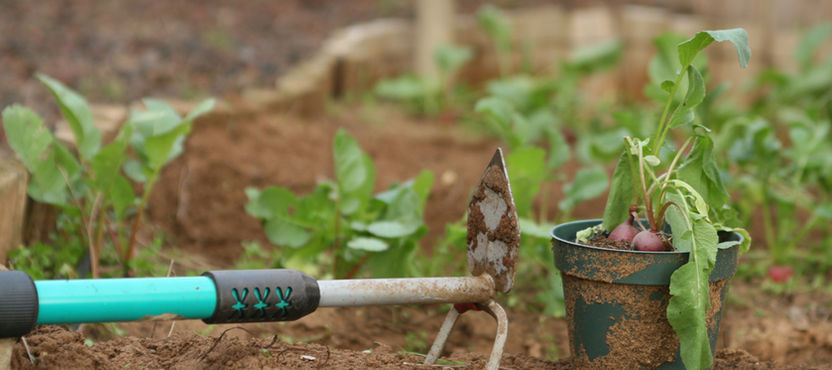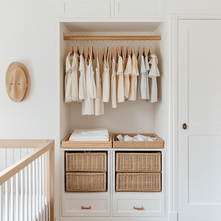How to Plan a Garden: Avoid These Common Mistakes and Get It Right
- Beril Yilmaz
- Mar 27
- 4 min read
Creating a garden that is both functional and aesthetically pleasing requires careful planning. Whether you want a lush green retreat, a vegetable haven, or a space for relaxation and entertainment, understanding how to plan a garden is the key to success.
From choosing the right plants to designing a layout that maximizes space and enhances beauty, garden planning involves multiple elements. Considering factors such as climate, soil, sun exposure, and personal preferences will help you create an outdoor area that thrives year-round.
This guide walks you through every step of planning your garden, from conceptualizing ideas to implementing a well-structured layout. Whether you have a large backyard or a small urban space, these expert insights will help you design a garden that perfectly suits your needs.
1. How to Plan a Garden: Understanding Your Space

Before jumping into the design process, take a step back and assess your garden space. Understanding the land you’re working with will influence everything from plant selection to layout design.
Measure Your Space: Take accurate measurements of your garden, including boundaries, slopes, and existing structures.
Analyze Sunlight Patterns: Observe how the sun moves across your space throughout the day to determine the best spots for planting.
Check Soil Quality: Conduct a soil test to determine pH levels and nutrient content, which will help you select suitable plants.
Identify Drainage Issues: Look for areas where water pools or drains too quickly, as this will affect plant health.
By understanding your space, you can make informed decisions that lead to a thriving garden.
2. How to Plan a Garden: Choosing the Right Garden Style

The style of your garden should complement your home and personal taste. Here are some popular garden styles to consider:
Formal Garden: Symmetrical layouts, geometric shapes, and neatly trimmed hedges.
Cottage Garden: A mix of colorful flowers, winding paths, and a relaxed, natural look.
Modern Minimalist Garden: Clean lines, minimal plants, and hardscape elements like concrete and metal.
Wildlife-Friendly Garden: Designed to attract birds, bees, and butterflies with native plants and water features.
Japanese Garden: Zen-inspired elements like stone paths, water features, and carefully pruned trees.
Selecting a garden style will help guide your plant choices and layout decisions.
3. How to Plan a Garden: Creating a Functional Layout

Once you’ve assessed your space and chosen a style, it’s time to design your layout. A well-structured layout ensures your garden is both beautiful and practical.
Key Elements to Consider:
Zoning: Divide your garden into functional zones, such as a dining area, play space, flower beds, and vegetable patches.
Pathways: Use stone, gravel, or wood to create paths that connect different areas of the garden.
Focal Points: Install elements like a fountain, pergola, or sculpture to draw attention and add character.
Seating Areas: Incorporate benches, patios, or hammocks for relaxation and entertainment.
A well-planned layout ensures that every part of your garden serves a purpose.
4. How to Plan a Garden: Selecting the Best Plants

Plant selection is crucial for a thriving garden. Choose plants that suit your climate, soil, and maintenance preferences.
Tips for Choosing Plants:
Native Plants: These require less maintenance and are well-adapted to your region.
Perennials vs. Annuals: Perennials return every year, while annuals provide seasonal color.
Layering Plants: Combine ground covers, shrubs, and trees to create depth and interest.
Seasonal Interest: Choose plants that bloom in different seasons for year-round beauty.
Researching plant characteristics will help you create a balanced and sustainable garden.
5. How to Plan a Garden: Incorporating Hardscaping Features

Hardscaping elements add structure and functionality to your garden. Consider including:
Patios and Decks: Ideal for outdoor dining and entertaining.
Raised Beds: Great for vegetable gardening and improving drainage.
Fences and Walls: Provide privacy and wind protection.
Water Features: Ponds, fountains, or birdbaths add tranquility and attract wildlife.
Balancing softscape (plants) with hardscape elements creates a cohesive garden design.
6. How to Plan a Garden: Managing Water and Irrigation

Efficient water management is essential for a healthy garden. Consider the following:
Drip Irrigation: Conserves water by delivering moisture directly to plant roots.
Rain Barrels: Collect rainwater for sustainable watering.
Mulching: Helps retain soil moisture and reduce evaporation.
Drought-Tolerant Plants: Require less water and thrive in dry conditions.
Implementing smart watering techniques ensures plant health while reducing water waste.
7. How to Plan a Garden: Adding Lighting for Ambiance

Outdoor lighting enhances the beauty and functionality of your garden, especially in the evenings.
Types of Garden Lighting:
Pathway Lights: Illuminate walkways for safety and aesthetics.
Spotlights: Highlight trees, sculptures, or water features.
String Lights: Create a cozy and inviting atmosphere.
Solar Lights: Energy-efficient and easy to install.
Strategic lighting enhances the mood and usability of your outdoor space.
8. How to Plan a Garden: Maintaining Your Garden Year-Round

A well-maintained garden stays vibrant and healthy throughout the seasons.
Seasonal Garden Maintenance Checklist:
Spring: Prune dead branches, plant new flowers, and fertilize the soil.
Summer: Water regularly, weed flower beds, and deadhead flowers.
Fall: Rake leaves, plant bulbs for spring, and mulch garden beds.
Winter: Protect plants from frost and store garden tools properly.
Consistent care ensures your garden remains beautiful and productive all year.
FAQs on How to Plan a Garden
Q: What is the best time of year to start planning a garden?A: Late winter to early spring is ideal for planning, as it allows time to prepare the soil and choose plants before the growing season begins.
Q: How do I choose the right plants for my garden?A: Consider factors like climate, soil type, sun exposure, and maintenance needs when selecting plants.
Q: What are the easiest plants for beginners to grow?A: Herbs, marigolds, petunias, succulents, and tomatoes are great for beginners as they require minimal care.
Q: How can I make my small garden look bigger?A: Use vertical gardening, mirrors, layered planting, and zoning to create an illusion of space.
Q: Do I need a professional to design my garden?A: While DIY garden planning is possible, hiring a professional from BY Design And Viz can help you create a more efficient and aesthetically pleasing garden.
Get Expert Garden Design Help from BY Design And Viz
Planning a garden can be overwhelming, but you don’t have to do it alone. Our experts at BY Design And Viz specialize in creating stunning outdoor spaces tailored to your needs. Whether you’re looking for a complete landscape redesign or just a few enhancements, we can bring your vision to life.
Contact us today to start planning your dream garden!































